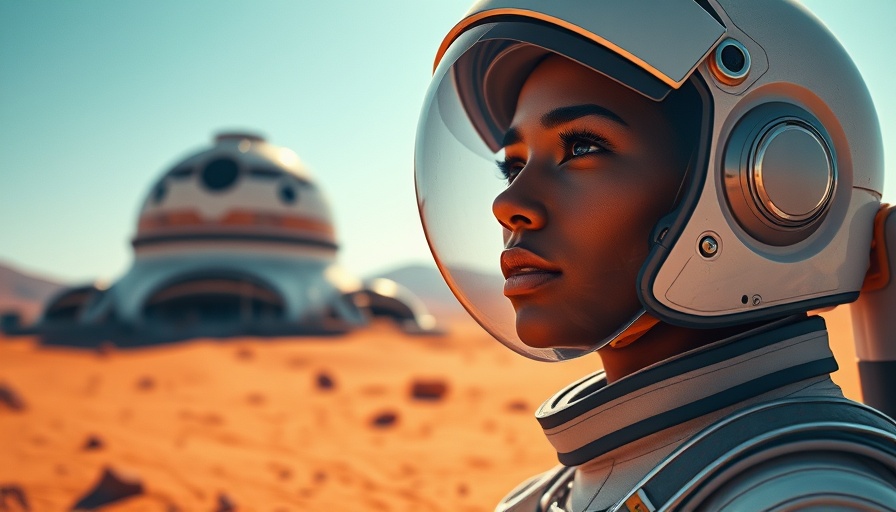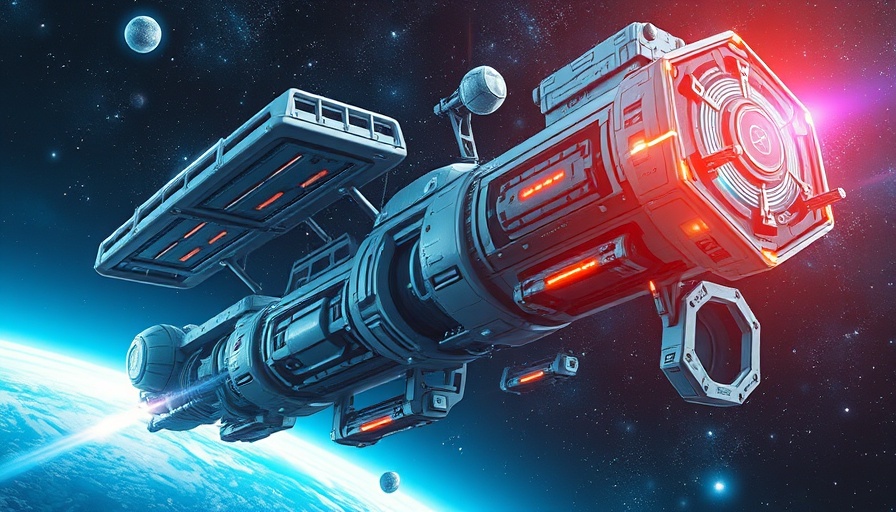
Is AI Revolutionizing Our World Unnoticed?
In recent discussions, the narrative surrounding artificial intelligence often swings between hype and skepticism. However, a closer look reveals that AI is not only legitimate but a driving force behind transformative changes in our daily lives. The video 10 Clues We're Underestimating the AI Revolution provides compelling insights into the undeniable influence of AI across various sectors, igniting further analysis on its implications.
In the video 10 Clues We're Underestimating the AI Revolution, the discussion dives into the significant and often overlooked implications of AI, exploring key insights that sparked deeper analysis on our end.
Real-World Applications Changing Lives
One of the most potent indicators of AI's significance is its real-world application. In healthcare, AI systems assist radiologists in identifying cancers earlier than traditional methods, directly impacting survival rates. For patients, this means earlier diagnoses can lead to more effective treatments. Similarly, in the financial sector, AI algorithms protect millions from fraud, quickly analyzing behavioral patterns to flag suspicious activities.
Beyond high-stakes environments, AI is quietly enhancing our everyday experiences. Whether it’s facial recognition features in smartphones or voice assistants managing our schedules, AI seamlessly integrates into our lives, enhancing productivity and convenience.
The Mathematical Foundations Underpinning AI
At the heart of AI's capabilities are robust mathematical principles. The intricate algorithms underpinning neural networks are rooted in linear algebra, statistics, and optimization theory. These disciplines work together to allow AI to predict outcomes based on historical data—effectively making calculations that were once thought impossible.
Documented Breakthroughs Propelling AI Forward
The evolution of AI isn’t simply theoretical; it’s characterized by empirical progress. Milestones such as IBM’s Deep Blue defeating Garry Kasparov and Google’s AlphaGo surpassing Lee Sedol in Go demonstrate substantial advancements in strategic thinking and decision-making capabilities. These milestones represent a shift in AI's accessibility and effectiveness, expanding its applications in diagnostics, creative arts, and even agriculture.
Ubiquitous Influence in Our Economy
The economic impact of AI cannot be overstated. It is projected to contribute $13 trillion to the global economy by 2030. Businesses adopting AI-driven solutions experience improved efficiency and profitability. For example, healthcare systems that deploy AI diagnostic tools could potentially reduce unnecessary procedures while simultaneously enhancing patient outcomes.
The Critical Role of Open-Source Collaboration
Open-source collaboration stands as a testament to the collective advancement of AI. Researchers freely share methodologies and findings, enabling rapid validation and refinement of breakthroughs. This collaborative spirit fosters innovation across regions, providing essential educational resources to underserved communities and enhancing medical diagnostics in resource-limited settings.
Preparing for an AI-Driven Future
It is clear that AI's trajectory is neither fleeting nor illusory—it is a steadfast evolution characterized by incremental advancements. This ongoing progression lays the groundwork for future innovations that promise to enhance human life across economic and social landscapes. As education systems adapt to incorporate AI-driven learning tools, the potential for inclusive access to knowledge increases.
The future of AI will undoubtedly be shaped by ethical considerations as various stakeholders, from governmental bodies to private entities, engage in discussions about its implications. Recognizing AI’s influence on human dignity and the necessity for responsible use aligns with our collective goal of maximizing benefits while minimizing risks.
Take the Next Steps in Understanding AI
As artificial intelligence continues to unfold in both expected and unexpected ways, enthusiasts and industry leaders alike must stay informed. Engaging with AI not just as a tool but also as a transformative force in society is essential. Follow developments, participate in conversations, and consider how AI can be utilized responsibly within your sphere of influence.
To explore further, dive into resources that break down the complexities of AI and its impact on business, healthcare, and beyond. Consider joining forums and discussion groups that will equip you with the knowledge to navigate this evolving landscape.
 Add Row
Add Row  Add
Add 




Write A Comment